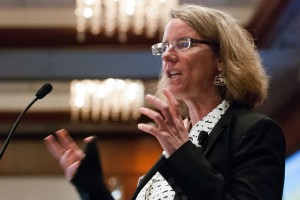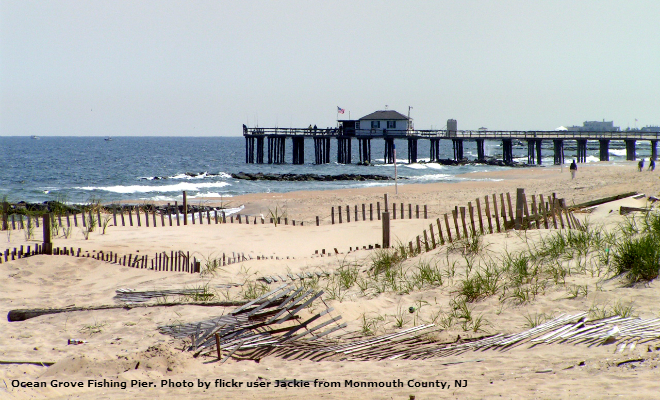New Jersey Future Blog
Forum Keynote: Opportunities (and Challenges) for Great Change
March 18th, 2015 by Elaine Clisham
 In her luncheon keynote at Redevelopment Forum 2015, Congress for the New Urbanism President and Chief Executive Officer Lynn Richards made the three-part case that a) this is the perfect time to be advocating for changes in how we grow and develop; b) there are great opportunities for successful redevelopment at all scales; but c) there are also challenges that must be navigated. Full presentation.
In her luncheon keynote at Redevelopment Forum 2015, Congress for the New Urbanism President and Chief Executive Officer Lynn Richards made the three-part case that a) this is the perfect time to be advocating for changes in how we grow and develop; b) there are great opportunities for successful redevelopment at all scales; but c) there are also challenges that must be navigated. Full presentation.
Redevelopment’s Moment
Current market and economic forces are combining to make redevelopment the preferred way for us to grow, said Richards. Our already-built places are key to satisfying demand from both Millennials and Baby Boomers for walkable, more urban living, and in many cities that have lost population in the last half-century, additional growth can be accommodated without any new building – by reactivating existing housing, for example, or repurposing other types of unused buildings. Redevelopment not only satisfies market demand, but yields significant economic benefits: A recent study has shown that in Boston, walkable urban places generate up to 12 times the tax revenue as drive-able sub-urban ones, and a 2002 George Washington University study has shown that for every acre of brownfield that is reclaimed, approximately 4.5 acres of open space is left undisturbed. These are key benefits for a state as high-cost and densely developed as New Jersey.
Opportunities at All Scales
The first opportunity Richards cited focused on infrastructure investment. Particularly in “cool” real estate markets, public investment in what she called “visible infrastructure,” such as streetscapes and transit, sends a powerful message to the private sector that this will be a place worth caring about. As an example, she cited the $11 million streetscaping investment in Lancaster, California, that turned an arterial road into a boulevard, and sparked more than $300 million in private investment in three years. However, she cautioned, it’s crucial to leverage such investment in a way that yields multiple benefits – green infrastructure that not only controls stormwater, for example, but also creates public parks and green spaces.
Richards also listed other kinds of opportunities that can be found in almost every community – disused malls with lots of surface parking, for example, that can be transformed into mixed-use centers.
Challenges
Richards identified two major challenges to pursuing large-scale changes in the way we grow and develop. The first is the market. It’s important to understand what the market can support currently, and what it might be able to support in the future, and, if it’s not yet ready for that future development, to have a well-crafted interim plan. Long-term infrastructure investments, such as transit facilities, may take decades to bring to fruition, so having an interim plan will help activate the land and manage expectations in the meantime.
The second challenge Richards cited is the constraints of most local land-use codes. What she referred to as a complete community needs the full range of housing choices, from single-family to small-scale multi-family such as duplexes and small townhome clusters, to larger-scale multi-family. Unfortunately, she said, many communities effectively outlaw many of these housing types – what she referred to as the “missing middle” between high-density and single-family – through their land-use codes. Instead, she said, we need codes that enable housing variety rather than stifling.
However, she said, perhaps the biggest obstacle to large-scale change in the way we grow is the issue of governance. These kinds of changes won’t happen without significant political will; sufficient technical ability; the right legal framework; transparency; and extensive public engagement.
But, she concluded, it is our job to make sure these things are available to communities if we are going to fulfill our mission of creating great places to live – places where all members of a community can thrive and prosper.
Lynn Richards’ full presentation















